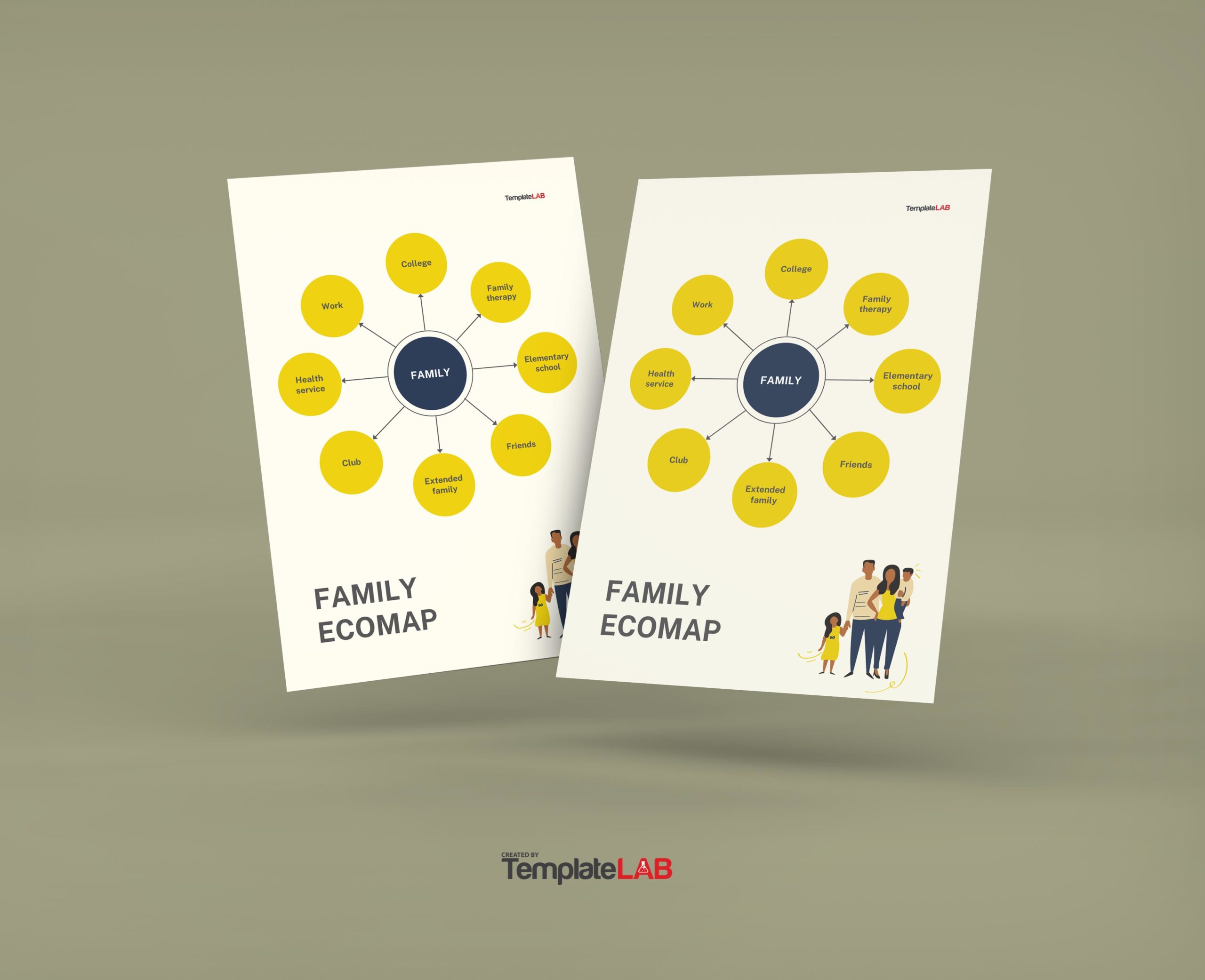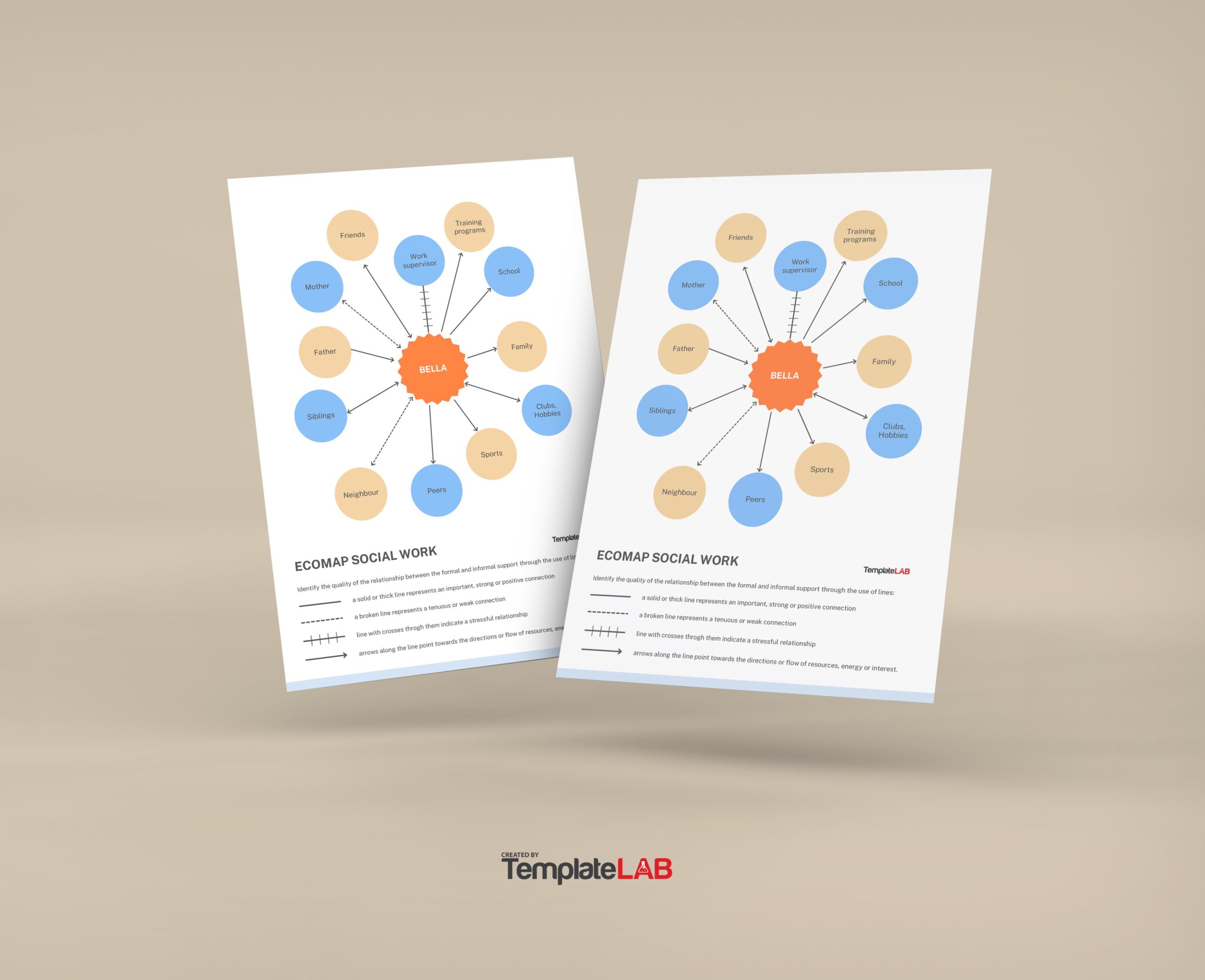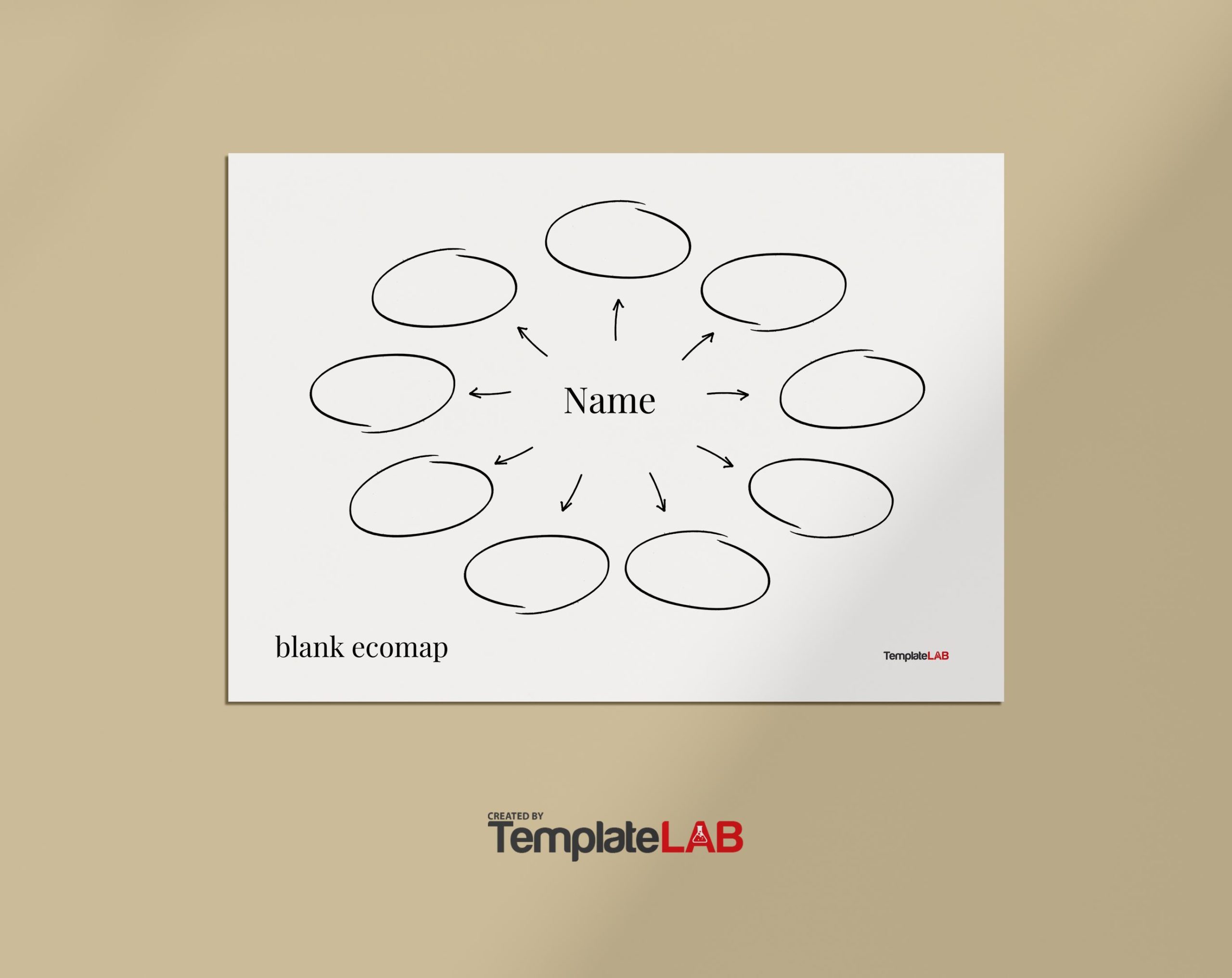People these days, because of the day-to-day circumstances, have become more aware of their environment and how it affects our daily lives. Social workers commonly use an ecomap template to keep track and comprehensively analyze the social and personal relationships between a person or a family and their external environment.
Table of Contents
Genograms and ecomaps now used by social workers and counselors to help identify the stressors or causes of depression and anxiety. An ecomap example is more than just an identifier of biological relationships. It also takes into account external connections and the quality and effect of them on the individual or a family. Let’s find out how to make an ecomap and more.
Ecomap Templates
What is an ecomap?
Simply stated, an ecomap is a visual representation that shows the relationships between an individual and his environment. The ecomap shows the connections a person has to a bigger social system which may include:
- mezzo, macro, and micro levels
- informal support like extended family and friends
- formal support like careers, service agencies, communities, and more
The ecomap example shows the relationships, social networks, and behaviors of an individual or family. Moreover, it can also pinpoint the person’s weak and strong connections to the outside world.
With an individual or family ecomap example, you can place a person or family in their current social standing. This document can provide guidance in what you should look at in a case and not what you should do. It’s also useful in the evaluation of different relationships and the quality of these relationships.
How to use an ecomap?
Social workers and other professionals can use ecomaps for developing case plans as these can provide useful information about individuals or families. These tools are visual maps of a subject’s connections to the world. With these, you can make assessments of various relationships and how strong these connections are.
One of the fields that an ecomap template can prove its usefulness is when working with refugee and migrant families. Their family ecomap examples can offer detailed visualizations of their relationships while mapping up areas of disconnection or isolation that you might need to address.
Genogram and ecomap are terms often encountered in related studies. While the former deals in providing a historical picture of a family and their links between and across generations, the latter locates the family in its current social situation. Ecomaps give you a comprehensive visualization of:
- Family dynamics
- Each member of the family’s connections to the social support system.
- Each member of the family’s connections to the community
- The level of connectedness of the whole family unit to the world
- Areas of deprivation
- Areas of severe duplication
You might expect some disagreements amongst family members when working with the family of a young person. These disagreements may be about the quality of relationships along with the nature and level of support provided by various influences.
As a practitioner, try viewing these sorts of discussions as useful because they may help elicit each member of the family’s beliefs about their roles in the family, community, and even some underlying values they hold.
Ecomap Examples
What other information can you find on an ecomap?
Once you learn how to make an ecomap, you can now use it to determine if the all the needs of the family are there, from the basic needs to the need for social connectedness and belonging. Here are other areas that can you may explore using an ecomap maker or template:
- How do the members of the family feel about their neighborhood?
- Can the family depend on professional agencies or people they know for support?
- What kind of support do they get? Is it enough to meet all of their needs?
- Is there any duplication of the services provided to them? If so, are they able to communicate about it?
- Does the family participate in other activities outside of work or school? Do any of the family members belong to groups?
- Does the family receive good health care?
- Does the family have any needs that aren’t getting addressed?
- Does the family have access to the support they need within their community?
Types of ecomap templates
One of the main objectives of an ecomap template is to evaluate families to give them the opportunity to participate in extensive ways. This important graphical representation can provide you with a picture of the connections between the family and their environment. It also demonstrates the flow of resources, stresses, deprivations, interactions, and points of conflict. The most common types of ecomap examples are:
- Ecomap Social Work Templates
- Family Ecomap Templates
Individual or family ecomap examples may change over time. You can readily download them from the internet. You can also use an ecomap maker to make a template where you track emotional relationships between the subject and their family members, friends, and more.
Making your own ecomap template
You can create your own ecomap easily an ecomap template as a guide. When finished, you may use it to locate an individual’s personal and social connections in his/her environment. It also becomes a useful tool in developing case plans, family counseling, and more.
Although there is a relation between genogram and ecomap, a genogram deals more with an individual’s family history whereas an ecomap shows the individual’s relationships within the environment. You can create an ecomap using templates available for free online. Use the templates to create an appealing and easy to understand ecomap in a matter of minutes.
Family counseling professionals and social workers are the most frequent users of ecomaps as this is an easy way to learn about a person’s most important connections and relationships. In some situations, an ecomap is also called an eco-gram. As mentioned earlier, making an ecomap could be much easier if you would use a template as a guide.
With a template, you can make an ecomap in a few minutes done by just entering new details in the blank fields on the template. Furthermore, the advancement of technology has made it easier to draft ecomaps. For those interested, you can find several ecomap makers and templates available online. Using one would reduce both efforts and time in making one.
Family Ecomap Examples
How to draw your own ecomap?
An ecomap is a useful assessment tool as it can help you describe, organize, and understand the ways people relate with and to each system in their lives. They reveal not just the relationships but also the quality of these relationships. An ecomap may include a person’s connections to the system which can be either negative or positive, damaging or nurturing, plagued or secured with stress or conflict.
You can depict the person’s relationships as distant or close, weak or strong, mutual or one-sided. All these elements in an ecomap would show that you can use it to depict the following:
- The important conflict-laden or nurturing connections between the subject and the external world
- The flow of resources or any deprivations or lacks
- The nature of the points of conflict and interfaces to address, resources to explore, and bridges to build
The ecomap is an essential and powerful tool because you can use it to:
- determine the subject’s resources, needs, strengths, and deficits
- discover the subject’s possible sources of anxiety and depression
- uncover hidden support systems of the subject
The great thing about an ecomap is that you can even draw it using simple shapes with a legend. Here are the steps for this:
- First, draw a big circle in the center to represent your subject.
- Next, draw small circles around your subject to represent each of the groups, people, institutions, and other entities that they have an existing relationship with. These representations may include friends, family members, churches, workmates, educational institutions, and so on. Write the name of the entities in the middle of each circle.
- Finally, add the connections between these entities and your subject. Do this with your subject. Draw the connections between your subject and each of these external entities denoted in the small circles. You may use different kinds of lines to indicate different kinds of connections.
For instance, use dotted lines to represent distant connections, double or thick lines to represent strong connections. The point is that you can use any kind of line in the illustration. Just make sure to define each line should in the legend. - To denote the direction in which the resources flow or the mutuality level of a relationship, it is best to use arrowheads. These symbols indicate the direction of influence of each relationship.
For instance, if one of the entities is “Social Security,” the arrow then should point to your subject. This means that your subject receives resources from this agency. For another example, you can use a line with arrowheads on both ends to indicate a good relationship between a mother and a child. This shows reciprocity in the relationship. Conversely, you can indicate a one-sided relationship using an arrow that points to a single direction.
























